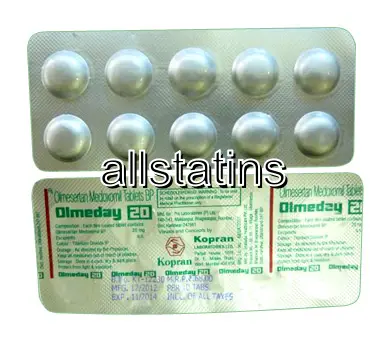| Package | Dosage | Price | Price per Dose | |
|---|---|---|---|---|
| Dosage: 10mg | ||||
| 90 pill | 10mg | $120.18 | $1.33 | |
| 60 pill | 10mg | $93.27 | $1.54 | |
| 30 pill | 10mg | $68.15 | $2.24 | |
| Dosage: 20mg | ||||
| 360 pill | 20mg | $626.09 | $1.74 | |
| 180 pill | 20mg | $339.05 | $1.88 | |
| 120 pill | 20mg | $249.35 | $2.08 | |
| 90 pill | 20mg | $202.70 | $2.26 | |
| 60 pill | 20mg | $152.47 | $2.53 | |
| 30 pill | 20mg | $95.06 | $3.14 | |
| Dosage: 40mg | ||||
| 180 pill | 40mg | $649.41 | $3.61 | |
| 120 pill | 40mg | $453.86 | $3.79 | |
| 90 pill | 40mg | $364.16 | $4.05 | |
| 60 pill | 40mg | $267.29 | $4.47 | |
| 30 pill | 40mg | $161.44 | $5.36 | |

Benicar Description
Introduction to Benicar
Benicar is a widely prescribed medication in the United States used primarily to manage high blood pressure, also known as hypertension. It belongs to a class of drugs called angiotensin II receptor blockers (ARBs). These medications work by relaxing blood vessels, making it easier for blood to flow through the body. Controlling blood pressure is crucial in preventing serious health issues like strokes, heart attacks, and kidney problems. Many patients find Benicar effective in achieving and maintaining their blood pressure goals.
How Benicar Works
The active ingredient in Benicar is olmesartan medoxomil. Once ingested, it converts into olmesartan, which blocks the action of a natural substance called angiotensin II. This substance typically causes blood vessels to narrow. By preventing this narrowing, Benicar helps lower blood pressure and reduces the workload on the heart. Its once-daily dosing makes it a convenient option for many patients with hypertension.
Pros and Effectiveness
Many users in the USA report that Benicar effectively lowers their blood pressure levels when taken as prescribed. It’s generally well-tolerated and provides steady control over time. Some patients appreciate that it doesn’t cause a significant cough, which is a common side effect with other related medications. Additionally, Benicar has demonstrated benefits in reducing the risk of cardiovascular events in high-risk patients. Its proven track record makes it a popular choice among physicians and patients alike.
Possible Side Effects and Cautions
While most users experience minimal side effects, some common issues include dizziness, headache, or mild fatigue, especially when starting the medication. Rarely, more serious side effects like kidney problems or elevated potassium levels can occur. Patients with certain medical conditions, such as kidney disease or low blood pressure, should inform their healthcare provider before starting Benicar. It’s important to have regular check-ups to monitor your health and ensure the medication's effectiveness and safety.
Availability and Usage in the US
Benicar is available by prescription through licensed pharmacies across the United States. It is typically prescribed alongside lifestyle changes like diet and exercise. It’s important to follow the prescribed dosage and timing to get the best results. It’s also advised not to stop taking Benicar suddenly without consulting a healthcare professional, as blood pressure may rebound or worsen.
Patient Reviews and Feedback
Many patients in the US report positive experiences with Benicar. They appreciate its reliable blood pressure lowering effects and once-daily dosing. Some mention that it helps them feel more energetic and less worried about their hypertension. However, a few users have noted mild side effects that resolved over time or with dosage adjustments. Overall, the consensus indicates that Benicar is an effective part of hypertension management for a wide range of patients.
Conclusion
Benicar remains a trusted medication for managing high blood pressure in the United States. Its proven efficacy, convenient dosing, and tolerable side effect profile make it a preferred choice among many healthcare providers. Patients are encouraged to discuss their individual health conditions with their doctor to determine if Benicar is suitable for their needs. Regular monitoring and adherence to prescribed guidelines are essential for achieving optimal health outcomes.